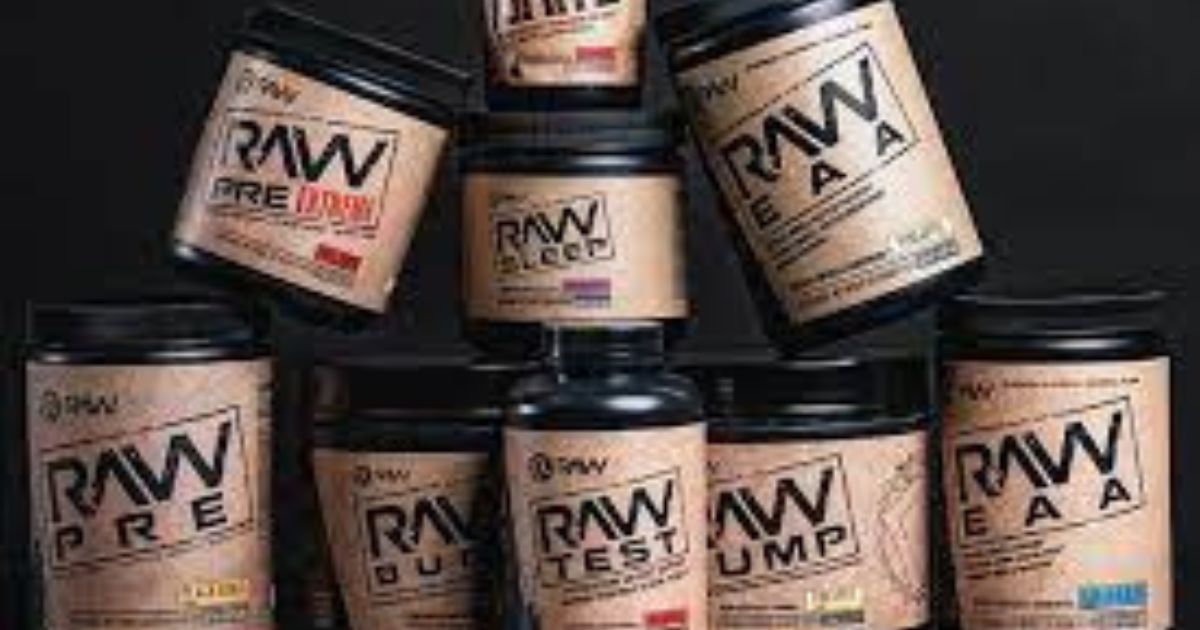Chorizo Nutrition is a type of sausage that is high in fat, calories, and sodium. In a 3.5-ounce serving of chorizo, there are typically around 455 calories, 37 grams of fat, and 1,500 milligrams of sodium.
Chorizo nutrition is a type of sausage that is commonly used in spanish and mexican dishes. While it is flavorful and adds depth to many meals, it is important to note that it is also high in fat, calories, and sodium.
A 3. 5-ounce serving of chorizo typically contains approximately 455 calories, 37 grams of fat, and 1,500 milligrams of sodium. These nutrition facts make it important to consume chorizo in moderation and pair it with healthier food choices to maintain a balanced diet. In this article, we will explore the nutrition facts of chorizo in more detail.

What Is Chorizo And Why Is It So Popular?
Chorizo nutrition is a type of pork sausage that originates from spain and portugal. It has become increasingly popular worldwide due to its rich flavor and versatility in cooking. In this blog post, we will explore the history and nutrition facts of chorizo.
Brief Introduction To Chorizo Nutrition And Its History
- Chorizo is a type of cured sausage made from coarsely chopped pork, paprika, and other spices.
- The history of chorizo dates back to the roman empire, where it was known as “salsiccia”.
- Chorizo was originally made as a way to preserve meat, but it soon became a staple in the spanish and portuguese diets.
Why Is Chorizo Nutrition So Popular?
- Chorizo is known for its bold, spicy flavor, thanks to the addition of smoked paprika and other spices.
- It can be used in a variety of dishes, including pasta sauces, soups, stews, and even breakfast burritos.
- Chorizo is also a good source of protein and contains essential vitamins and minerals such as vitamin b12, iron, and zinc.
How To Choose And Store Chorizo
- When purchasing chorizo, look for a meaty texture with a rich, red color.
- It is possible to purchase fresh or cured chorizo, but be sure to read the label carefully to ensure that you’re buying the type you need for your recipe.
- Store chorizo in the refrigerator and consume it within one week. It can also be frozen for up to three months.
How To Cook Chorizo Nutrition
- Fresh chorizo can be removed from its casing and cooked like ground meat in a skillet.
- Cured chorizo can be sliced and added to dishes for extra flavor.
- Chorizo can also be grilled on a skewer or added to paella for an authentic spanish taste.
Chorizo is a flavorful and versatile ingredient that has become increasingly popular in recent years. By understanding its history, nutrition facts, and cooking methods, you can explore the many ways to enjoy this delicious sausage.
The Nutritional Value Of Chorizo Nutrition

Chorizo is a popular type of sausage originating in spain but now enjoyed worldwide. It’s a versatile ingredient that can be mixed with eggs, pasta, salads, and many other dishes, but have you ever wondered about its nutritional value? Keep reading to learn more about the nutritional content of chorizo, the different types available, and the potential health benefits of consuming it.
The Nutrients Found In Chorizo Nutrition Facts
Chorizo is a rich source of nutrients, including protein, fat, and vitamins.
- Protein: Chorizo is high in protein, with a 100g serving containing over 24g of protein, making it an excellent source of this important nutrient.
- Fat: Chorizo is a high-fat food, with a 100g serving containing around 30g of fat. The fat content in chorizo is mainly due to its pork content, which is relatively fatty meat.
- Vitamins: Chorizo is a good source of various vitamins, including vitamin b-12, which is essential for maintaining healthy nerve cells and red blood cells.
A Comparison Of Different Types Of Chorizo Nutrition
There are several types of chorizo available, each with its unique characteristics.
- Spanish chorizo: This is the original type of chorizo first made in spain. It’s typically made with smoked pork, which gives it a distinct smoky flavor.
- Mexican chorizo: This type of chorizo is spicier and has a bright red color due to the addition of chili peppers.
- Argentinean chorizo: This chorizo is made with beef and pork, typically flavored with garlic and paprika.
The Potential Health Benefits Of Consuming Chorizo
While chorizo nutrition is a high-fat food, it still offers several potential health benefits when consumed in moderation.
- Rich in protein: The high protein content found in chorizo can aid in muscle growth and repair, support immune function, and help maintain healthy skin, nails, and hair.
- Boosts energy: The high fat content in chorizo offers a concentrated source of energy, making it an excellent choice for those requiring sustained energy, such as athletes.
- Contains essential vitamins: Chorizo contains several vitamins, including vitamin b12, which plays a crucial role in red blood cell maintenance.
Chorizo is rich in nutrients, comes in different types and has potential health benefits. Just remember to consume it in moderation as part of a healthy, balanced diet.
Chorizo As Part Of A Healthy Diet
Chorizo Nutrition Facts
If you’re a foodie who loves adding some spice to your meals, you’ve probably had chorizo. It’s a popular type of sausage that originates from spain and portugal, but has become popular worldwide. Chorizo is available in different forms and can be prepared in various ways.
It’s essential to know the nutrition facts about chorizo, as well as how to incorporate it into a healthy diet.
Although chorizo nutrition is processed meat and contains high amounts of fat and sodium, it can still provide some nutritional benefits. Here are some key points:
- Chorizo is an excellent source of protein, providing about 20 grams per serving, sufficient to meet a large portion of your daily protein requirement.
- Chorizo also contains essential micronutrients such as iron, phosphorus, and zinc. These minerals help in maintaining strong bones, healthy skin, and assist in transporting oxygen and nutrients throughout your body.
- The spicy flavor of chorizo comes from a compound called capsaicin, which is known to have anti-inflammatory and pain-relieving properties.
How To Incorporate Chorizo Nuitrition Into A Balanced Diet
To enjoy chorizo and still maintain a healthy diet, consider the following:
- Do not consume chorizo nutrition on a daily basis; it’s best to moderate your intake due to its high fat and sodium content.
- Choose chorizo made from leaner meats to cut down on the fat content.
- Pair chorizo with vegetables to add fiber and vitamins to your meal.
- Replace unhealthy condiments with healthy ones like salsa or guacamole.
The Role Of Portion Control In Enjoying Chorizo Nutrition Fact
Portion control is critical when consuming chorizo. Here are some guidelines:
- Measure your serving size to ensure you stick to a healthy portion.
- Be mindful of how you prepare your chorizo; grilling, baking, or broiling are better options than frying.
- Cut the chorizo into smaller pieces when incorporating it into a meal; this way, a little goes a long way.
Recipes And Meal Ideas Featuring Chorizo
There are so many different ways to enjoy chorizo; here are some ideas to get you started:
- Add chorizo to your scrambled eggs for a flavorful breakfast dish.
- Use chopped chorizo with your vegetables in a stir-fry.
- Make a healthy bean soup and add some chorizo to boost the flavor.
- Create a satisfying and healthy quinoa bowl with chorizo, avocado, black beans, and veggies.
- Wrap chorizo in a tortilla with grilled veggies and salsa.
Chorizo can be enjoyed as part of a healthy diet by practicing portion control, selecting leaner options, and pairing it with vegetables. Using the different recipes and meal ideas featuring chorizo can help add variety to your diet. Enjoy your chorizo, but in moderation!
Choosing The Right Chorizo
Understanding Different Variations Of Chorizo
Chorizo is a type of sausage that originated in spain and has now become popular worldwide. There are two main types of chorizo: mexican and spanish. Mexican chorizo has a crumbly texture and is made with ground pork, while spanish chorizo has a more solid texture and is usually made with sliced pork or beef.
There are also variations of chorizo within each type, with different levels of spiciness and smokiness.
Selecting High-Quality, All-Natural Chorizo
When selecting chorizo, it is important to choose a high-quality, all-natural product. Look for chorizo that is made with quality ingredients such as high-grade pork, spices, and natural casings. Avoid products that contain fillers, artificial preservatives, and added colors or flavors.
Choosing all-natural chorizo ensures that you are getting a healthier option, with no added chemicals or unnecessary additives.
Tips For Reading Labels To Identify The Best Chorizo Options
Reading the label is essential when selecting the best chorizo options. Here are some tips to help you make an informed decision:
- Look for chorizo that is made with natural ingredients and no artificial preservatives or additives.
- Check the percentage of fat in the chorizo; ideally, it should contain no more than 30% fat.
- Look for chorizo made with high-quality meat, preferably with no added hormones or antibiotics.
- Avoid chorizo with high levels of sodium or sugar.
- Consider the origin of the chorizo; spanish chorizo tends to be of higher quality than other variations.
- If possible, purchase chorizo from local or organic sources for a fresher and healthier option.
Remember, choosing the right chorizo can make a significant difference in the taste and nutritional value of your meals. So take the time to read the labels and select high-quality, all-natural options.
Chorizo And Special Diets
Chorizo is a popular high-fat sausage that is often used in spanish and mexican cuisine. As with any food, it’s important to know how it can fit into your specific dietary needs. Here’s what you need to know about chorizo and special diets:
The Role Of Chorizo In Keto And Low-Carb Diets:
- Chorizo is high in fat and protein, which makes it a great option for those following a keto or low-carb diet.
- However, it’s important to note that some brands of chorizo may have added sugars or fillers that can negatively impact your carbohydrate intake.
Chorizo And Gluten-Free Diets:
- Fortunately, chorizo is naturally gluten-free as it does not contain wheat, barley, or rye.
- However, some brands may use gluten-containing fillers or thickeners. Be sure to read the label or contact the manufacturer to confirm.
Alternatives To Traditional Chorizo For Vegetarian And Vegan Diets:
- If you follow a plant-based diet, fear not! There are several vegan and vegetarian alternative options to traditional chorizo that offer a similar taste and texture.
- Some options include soy chorizo, seitan chorizo, and jackfruit chorizo.
It’s always important to check the ingredient list and nutrition facts before consuming any food, especially if you have specific dietary requirements. With these options in mind, you can enjoy the delicious flavor of chorizo while staying true to your dietary goals.
Frequently Asked Questions Of Chorizo Nutrition Facts
What Are The Main Nutrients In Chorizo?
Chorizo is a good source of protein, zinc, and vitamin b12. It also contains healthy fats like monounsaturated fats and oleic acid.
Is Chorizo High In Calories?
Yes, chorizo is high in calories due to its high fat content. One serving of chorizo can have up to 300 calories.
Is Chorizo Good For Weight Loss?
While chorizo can be part of a balanced diet, it is not the best food for weight loss. Its high calorie and fat content may hinder weight loss efforts.
Does Chorizo Raise Cholesterol Levels?
Consuming chorizo in moderation is unlikely to raise cholesterol levels significantly. However, those with high cholesterol levels should limit their intake.
What Is The Difference Between Spanish And Mexican Chorizo?
Spanish chorizo is cured and dried, while mexican chorizo is fresh and needs to be cooked. Spanish chorizo is also typically made with smoked paprika.
Can Chorizo Be A Part Of A Healthy Diet?
Chorizo can be enjoyed in moderation as part of a balanced diet. It is best to opt for leaner versions and pair it with healthier ingredients such as vegetables.
Conclusion
Chorizo is a delicious and flavorful sausage that has its roots in spain. Its unique taste and texture make it a great addition to many dishes. Not only does chorizo enhance the flavor of food, but it also has a variety of nutritional benefits.
Loaded with protein, vitamins and minerals, eating chorizo in moderation can be a part of a healthy diet. However, it is important to keep in mind that chorizo is a high-calorie food that is high in sodium, so it should be consumed in moderation.
Overall, understanding the chorizo nutrition facts can help you make informed decisions about your food choices and incorporate this tasty sausage into your diet in a healthy way.




